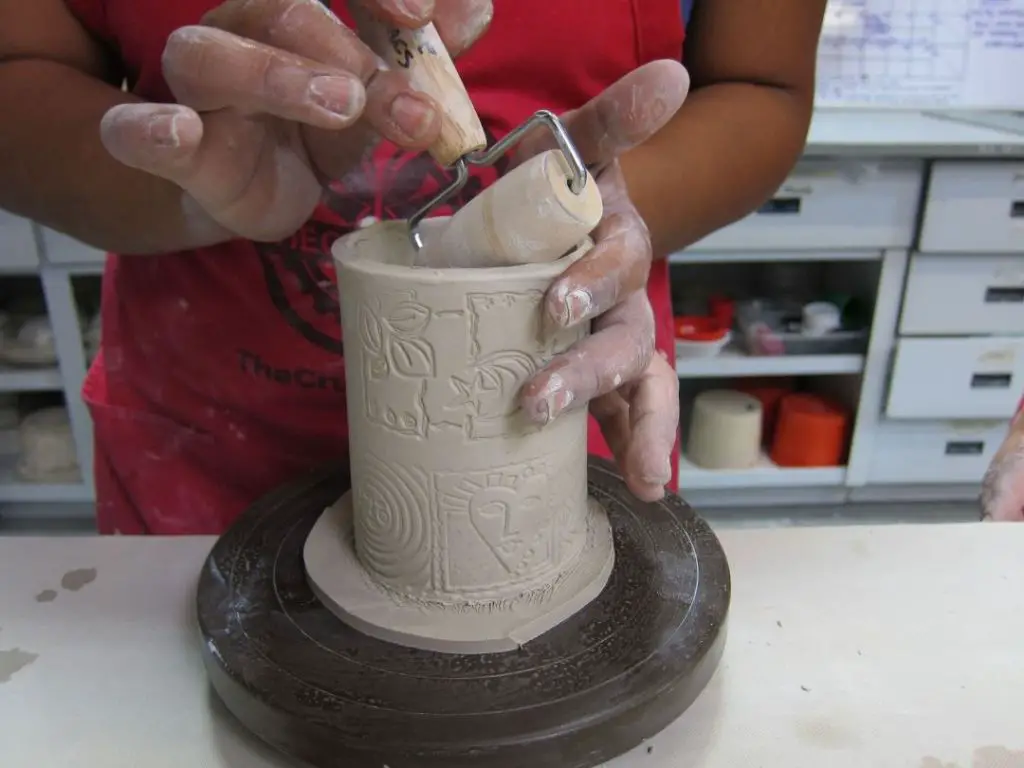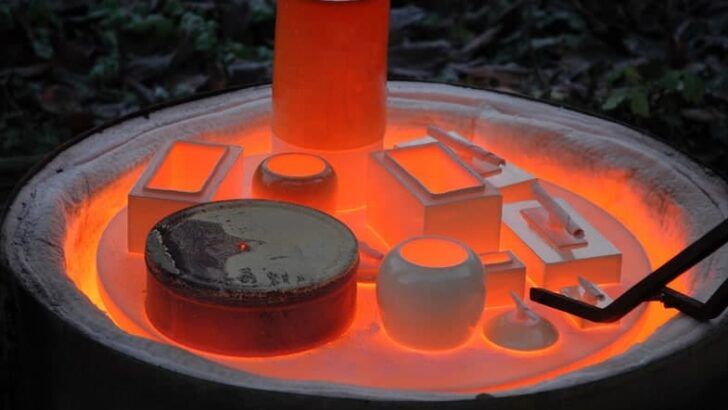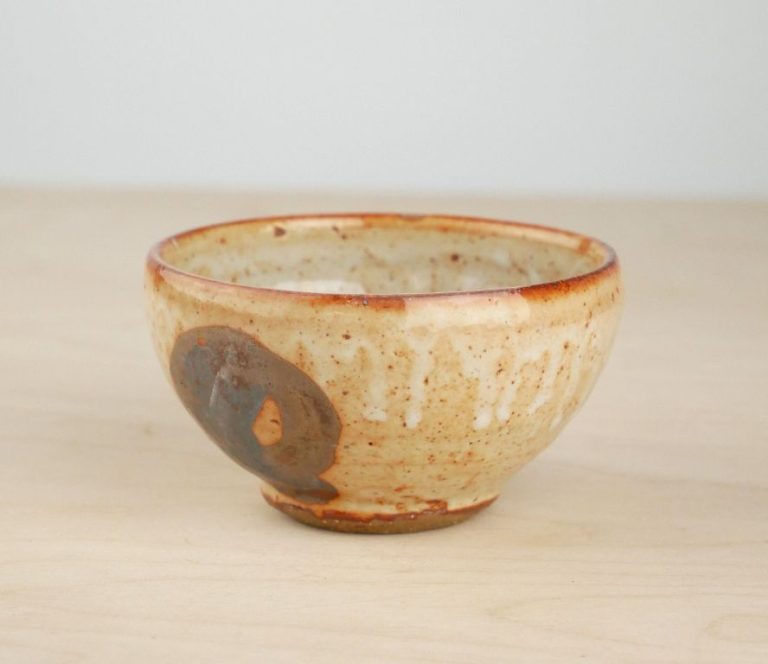What Is Hand Built Pottery?
What is Hand Built Pottery?
Hand built pottery refers to clay objects and ceramic art that is constructed by hand without the use of a potter’s wheel. Instead of throwing clay on a wheel, hand building relies entirely on shaping clay by hand using simple tools and techniques.
There are various hand building techniques, but some main methods include coil building, pinch pots, slab building, and sculpting/modeling. With hand building, the clay is rolled, pulled, pushed, joined, and formed using hands and basic tools to create both functional pottery objects and decorative ceramic art pieces.
Compared to wheel thrown pottery which requires a pottery wheel and the skill to center and pull up vessels, hand building provides more direct contact with the clay and allows artists to create shapes not possible on the wheel. It gives artists more control over details and surface textures. While hand built pottery requires patience, it enables creativity and custom designs.
Major Hand Building Techniques
Hand building is a general term for the various techniques used to shape pottery by hand without the use of a potter’s wheel. The three major techniques for hand building pottery are:
Pinch Pots
A pinch pot is created by pinching and squeezing a ball of clay between the fingers and thumb to form the desired shape. Pinch pots are one of the most basic and oldest hand building techniques, dating back thousands of years. They can be used on their own or as a starting point for more complex hand built vessels (The Crucible).
Coiled Pots
Coil building involves rolling out and stacking coils or ropes of clay on top of each other to build up the walls of a pot. The coil method allows for flexibility in controlling the shape and size. Adjacent coils are blended together using the fingers or a rounded modeling tool (The Crucible).
Slab Built Pots
Slab building uses flat planes or slabs of clay to construct forms. The slabs can be cut into shapes and joined together through techniques like scoring and slipping. Slab construction is known for allowing precision and geometric shapes not easily achieved with other hand building methods (The Crucible).
History and Origins
Pottery making dates back to the Neolithic period over 12,000 years ago. Archaeological evidence suggests that hand building was one of the earliest widespread methods for constructing utilitarian vessels and containers. The earliest known hand built pottery artifacts have been unearthed in Japan and date back to the Jōmon period over 16,000 years ago [1]. Hand built forms also proliferated across the globe during the Neolithic period, as early human civilizations began to form permanent settlements and transition from hunter gatherer societies to agriculture.
Hand built pottery held tremendous historical and cultural significance across the ancient world. Techniques like pinching, coiling, and slab building emerged independently amongst early human civilizations in locations as widespread as the Americas, Japan, Africa, ancient Egypt, China, and Mesopotamia. As civilizations progressed, hand built ceramics took on greater artistic expression and were intricately integrated into cultural and social practices.
Clay Bodies Used
Earthenware clay is the most common type used for handbuilding. According to The Crucible, “Earthenware clay is the best clay for handbuilding pottery because of its strength and plasticity. Other clays, like porcelain, are not as suitable for handbuilding.”
Earthenware clays are very plastic and easy to work with. They have lower maturing temperatures, typically around cone 04-06 which makes them ideal for handbuilding and firing in a simple kiln. Common earthenware clays include terracotta and red clay.
Stoneware clays are also frequently used. They are stronger than earthenware at high temperatures but can be more difficult to handbuild with. Stoneware fires to higher temperatures around cone 6-10. They produce a harder, more durable finished product. Popular stoneware clays are IMCO 400, Laguna’s Soldate 60, and Highwater’s Clays’s White Stone.
Porcelain clays are not well-suited to handbuilding because they lack plasticity. However, some porcelain clays can be blended with other clays to improve workability. Porcelain is fired to very high temperatures above cone 10.
Tools and Supplies
Hand building pottery requires some basic tools to help shape, smooth, and decorate the clay. According to Bailey Ceramic Supply, essential hand building tools include:
- Paddles – Used to flatten and shape the clay. Paddles come in various shapes and sizes.
- Ribs – Used to smooth and compress clay. Ribs can be made of wood, steel, or rubber.
- Loop tools – Used to refine details and create textures. Loop tools have wire or wooden loops on the end.
- Cutting tools – Used to cut slabs of clay or remove excess clay. These include wire tools, fettling knives, and ceramic scissors.
Some other helpful basic hand building tools are clay shapers, rasps, clay cutters, and modeling tools. Having an assortment of different ribs, paddles, and loop tools allows working the clay in various ways.
Advantages Over Wheel Throwing

One of the main benefits of hand building pottery versus wheel throwing is the ability to create more freeform and organic shapes that are not constrained by the rotational symmetry inherent in wheel thrown pieces. As the Pottery Crafters article explains, hand building allows for more adaptability and creativity in form.
Another advantage is that hand building does not require the specialized skill of centering clay on a spinning wheel. While wheel throwing takes extensive practice to master, basic hand building techniques can be learned more quickly by beginner potters. This makes creating pottery more accessible as a hobby or artistic endeavor.
Hand building also lends itself well to creating rich surface decoration and textures that would be difficult to achieve on the wheel. Pinching, coiling, and slab building allow for delicate control in embellishing the form and surface of a piece.
Limitations and Challenges
While hand building offers many benefits, it also comes with some limitations compared to wheel throwing. One of the main challenges is the smaller scale and simpler forms that are achievable through most hand building techniques like pinch pots, coil building, and slab construction. It can be difficult to create large or tall forms due to structural integrity and weight limitations (source). Complex shapes with curves, contours, and thinner walls are also harder to execute through hand building.
Joining parts and attachments is another challenge, as seams between slabs and coils can crack or come apart if not blended properly. Getting smooth, seamless joins takes practice and patience. According to Tanaki Ceramics, some hand building techniques like pinch pots also limit the size and shapes that can be created. Overall, hand building requires more time and effort to create finished pieces, especially larger and more intricate forms.
Notable Artists and Styles
Hand built pottery has been practiced by artisans around the world for thousands of years. Some of the most famous ceramic artists working today specialize in hand building techniques.
Edmund de Waal is a renowned British ceramic artist who creates minimalist porcelain vessels using coiling and pinching techniques. His work often explores themes of memory and loss (https://www.singulart.com/en/blog/2023/10/24/famous-ceramics-artist/).
Japanese-American artist Shio Kusaka is known for her luminous geometric forms created through faceted slab construction. She often pushes the boundaries of hand built ceramics through her experimental shapes and intricate surface textures.
Grayson Perry is a British ceramicist and turner winner known for his intricate pots decorated with complex narrative imagery. His pots combine hand built coil, slab and pinch techniques with detailed sgraffito surface embellishment.
Magdalene Odundo is a Kenyan-British studio potter acclaimed for her hand built and burnished ceramic vessels. Drawing on African ceramic traditions, her pieces have a smooth, undulating organic quality.
Many contemporary ceramic artists are exploring innovative hand building methods and pushing the boundaries of what can be created solely by hand. Regional hand building traditions around the world are also being revived and reinterpreted by a new generation of potters.
Typical Uses and Applications
Hand built pottery has a wide variety of uses and applications. Some of the most common include:
Sculptural Pieces
Hand building techniques allow artists to create intricate sculptural forms not possible on the wheel. The sculptural possibilities are endless, allowing artists to create abstract shapes, figures, animals, and more (The Crucible). Hand building is ideal for large sculptural installations as well.
Functional Ware
While wheel throwing may be better suited for some functional ware like cups or bowls, hand building can be used to create many functional ceramic objects. Teapots, pitchers, platters, and more can all be hand built (Ceramic Arts Network). The hand’s ability to form asymmetric shapes allows for unique functional pieces.
Tiles
Hand building is commonly used to create ceramic tiles for walls, countertops, floors, and more. The hand can press and shape clay into customized tiles in different shapes and sizes (The Crucible). Tiles can also be sculpted or imprinted with texture.
Garden Pieces
From planters to sculptures, many ceramic artists create hand built pottery for the garden. The durability of fired clay makes it ideal for outdoor use. Hand building allows flexibility in creating planters or yard art in diverse shapes and sizes.
Getting Started
For beginners looking to get into hand building pottery, it’s best to start simple. Focus on learning basic hand building techniques like pinch pots, coil building, and slab construction. These are the foundations of hand built pottery that will allow you to create a wide variety of forms.
Some essential starter supplies include:
- Clay – A moist clay like stoneware or earthenware works well. Avoid very soft clays at first.
- Clay tools – Start with basic tools like a rib, loop tool, wood knife, and sponge.
- Work surface – A canvas or board for hand building on.
- Rolling pin – For rolling out slabs and smoothing coils.
When beginning, aim to create simple forms from basic shapes. Practice making pinch pots, coiled bowls, and slabs boxes. Pay attention to construction techniques like scoring and slipping clay for adhesion. As skills develop, more complex and refined forms can be attempted. But starting simple establishes essential hand building skills.
It’s also key for beginners to learn the stages of the clay process – wedging, drying, firing, and glazing. Understanding how to properly handle clay will lead to better results. Be patient and enjoy the entire process. Hand building pottery takes practice, but with persistence beautiful hand crafted pottery can be made.


